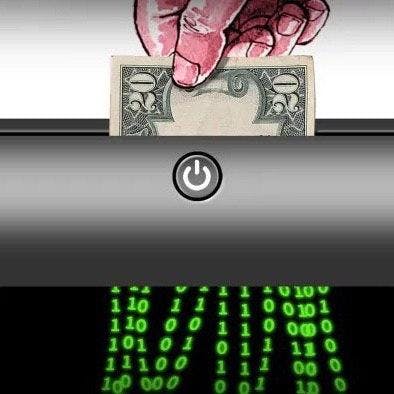
- All
- Tools
- Analytics
- Technical Analysis
- Trading
- Blockchain
- DeFi
- Guides
- Company News
- Educational
- Opinion
- Price Predictions
- Market News
- News
- Trading cases
- Practical guides
- Exchanges
- Trading signals
- Cryptocurrency
- Crypto bots
- Other
Become a crypto master
Learn everything about crypto,
trading and bots

The digital future of government currencies
Start Trading on 3Commas Today
Get full access to all 3Commas trading tools with free trial period

The Bank for International Settlements, also known as “The Central Bank of Central Banks”, published a study in January 2020, which states that the world Central Banks are conducting “extensive” work on launching digital currencies. In this article, we will elaborate on the current situation in the development of the world government digital currencies.
Central interest
In January this year, 66 Central Banks, representing 21 advanced economies and 45 EMEs, and covering 75% of the world’s population, and 90% of its economic output were surveyed. According to the report, 80% of the responders are studying the development of CBDCs (Central Bank Digital Currency). Some 40% of central banks have progressed from conceptual research to experiments or proofs-of-concept, and another 10%, which, by the way, serve 20% of the world’s population, have developed pilot projects and reported that they are able to issue a CBDC in the short term. Interestingly, all of them are EME countries…
It is worth noting that motivation varies from country to country – whether it is improving efficiency, security, openness of domestic payments and the gradual replacement of cash, which is very important for developing countries, or improving the effectiveness of cross-border payments for advanced economies, but the latter is not considered a priority for most countries.
“Stablecoins can find widespread use where other cryptocurrencies have failed,” the report states.
European Union
Yves Mersch, vice chairman of the supervisory board of the European Central Bank (ECB), announced at the Consensus 2020 virtual conference that the ECB is currently carefully examining the possibility of issuing a retail CBDC.
It is reported that about 76% of all transactions in the Eurozone are currently carried out in cash, so the ECB’s debate on CBDC is mostly analytical. However, Mr. Mersch also reported that:
“CBDC for retail can be based on digital tokens that will be distributed in a decentralized way, that is, without a central ledger, and provide anonymity in front of the central bank, just like cash does.”
“We will introduce digital currency only if we firmly believe that it is necessary and able to fulfill our tasks of ensuring the stability of our currency. Meanwhile, we are showing great interest in digital innovations and changing expectations of money users. We are improving users’ views on CBDC – both in the ECB, the Eurosystem, and in the international community of central banks.”
Bahamas
On February 13, the local edition of The Tribune published the Central Bank governor’s statement. John Roll said that the digital Bahamian dollar would be rolled-out throughout all islands during the second half of 2020. At the same time, a pilot project was launched in Exuma in December:
“When the project launched in Exuma we started with three of the payment service providers and the on-island commercial bank, but at this point, we have eight financial institutions in total who are now involved in the project on different levels,” Mr. Rolle said. “The purpose of the pilot program is to create an infrastructure that ensures functional payment service compatibility.”
The Sand Dollar (the name of the CBDC of the Bahamas) is not inherently different but is a digital representation of the same currency. By law, it can in no way differ in value from the Bahamian dollar.
Jerry Butler, former executive officer of the Inter-American Development Bank (IDB) for the Caribbean, believes the Sand Dollar project could help the Bahamas catch up with the rest of the more developed world.
Sweden
Sweden has been exploring the possibilities of rolling out its own CBDC since spring 2017. Tests of the so-called E-krona have already begun. The pilot program will be valid until February 2021.
The idea is that a new digital krona based on blockchain technology will replace credit cards and cash in the future. Sweden is already one of the most cashless countries in the world, so experts agree that the launch of a full-fledged digital currency has increased chances there.
France
In a March 30, 2020 publication, the Central Bank of France called on third-party developers to create applications to experiment with the digital Euro and explore CBDC’s potential for tokenized financial assets settlement. It is reported that any technology may be used in the development of CBDC, and it must not necessarily use blockchain.
May 15, 2020, was the deadline for the application. On July 10, 2020, the Central Bank of France will select 10 participants from the EU or the parties of the European Economic Area agreement. In this case, the main criteria for selection will be “innovation”, the document says.
The main goal of the experiment is to model interbank settlements based on CBDC, identify benefits, and analyze potential risks. Nevertheless, the bank emphasized that it would not be engaged in creating money as part of the experiment, and would destroy tokens at the end of each reporting day, according to the results of test payments.
“The experiment will serve as a contribution to Banque de France’s wider discussion within the Eurosystem, which will decide on CBDC establishment. The tests are not intended to be continued on a long-term basis or for widespread use by the Bank of France itself.”
China
And of course, we’ve kept the Chinese blockchain and digital Yuan story for last!
DCEP (Digital Currency/Electronic Payment, DC/EP) is now ahead of the rest of the planet in terms of development.
The public launch of the national blockchain platform, BSN, was announced at a meeting of representatives of the Chinese government and leaders of organizations in Beijing on April 25, 2020.
BSN is a global infrastructure, jointly developed by China Mobile, China UnionPay, and Huobi China. It helps blockchain projects create and launch new applications, and also aims to accelerate the development of smart cities and the digital economy.
The introduction of the national blockchain platform is the first fundamental step before the launch of the global financial project – the state cryptocurrency DCEP (digital Renminbi), which is currently undergoing testing.
DCEP is the only legal digital currency in China, a centralized sovereign currency created and approved by the Chinese government.
DCEP features:
- can not be mined, and one is not able to place a bet on the DCEP
- provides real-time data collection in regards to money creation and bookkeeping
- mitigates risks such as money laundering and illegal financing
- promotes the internationalization of the Renminbi and positive changes in the existing cross-border payments system
- rules out speculation
- will initially be distributed to all commercial banks affiliated with the Central Bank of China
- initial deployment will serve as an official production test for the currency system, where network and security will be evaluated
- at the second stage, DCEP will be distributed among large fintech companies such as Tencent and Alibaba for use in WeChat Pay and AliPay, respectively
- Shenzhen, Chengdu, Xunan and Suzhou will be the first cities to test DCEP, where crypto-Yuan among other use cases will play a role of the travelsubsidies payment vehicle for public sector workers in May 2020
- Starbucks, McDonald’s and Subway will participate in DCEP testing, along with some local hotels, unmanned supermarkets, mailboxes, bakeries, bookstores and gyms
- all merchants who accept digital payments (such as ApplePay, AliPay, and WeChat) are required to accept DCEP under threat of potential business license loss
- DCEP will have NFC-based payment options that do not require device connections during transfer, which will lead to a direct replacement of paper money since DCEP can be used in areas where the Internet is not available
- DCEP does not require a mobile device to be linked to a bank account
A wave of rumors swept through local social networks that the Agricultural Bank of China has already conducted DCEP’s internal closed beta tests. According to the leaked screenshots from the closed beta version, the DCEP wallet will support several essential functions, including digital asset exchange, wallet management, previous transactions search option, payment via QR code, as well as money transfers and mobile payments.
In response to rumors, the Agricultural Bank said that the launch of DCEP would be carried out in accordance with the instructions of the Central Bank. However, the news was enough for the markets to show a positive reaction. The growth in shares of technology companies such as Beijing Certificate and Global InfoTech Holdings Inc reached as high as 10%.
A photo of the DCEP Bank of China wallet interface is already circulating on the Weibo network. As you can see from the photo, the wallet allows you to send, receive, convert currency, see the transaction history, and also looks simple and intuitive.
Adoption stage
As we can see, most countries have now switched from the complete denial and desire to fully regulate the cryptocurrency market, to a detailed study of the phenomenon of cryptocurrencies and blockchain technology. Governments all around the world are aiming to launch national digital currencies, which in general is a positive signal and the first important step towards the blockchain technologies’ mass adoption. However, it is still difficult to say how this will affect the cryptocurrency market in the long run.
The information above contains an analysis and forecast of the cryptocurrency market, which are associated with high risks. This information is presented for informational purposes only and in no way should be construed as a recommendation for the purchase or sale of the assets. Any person considering trading digital assets should seek independent advice on the suitability of any particular digital asset.

A proven leader, successful at establishing operational excellence and building high-performance teams with a sharp focus on value creation and customer success.






